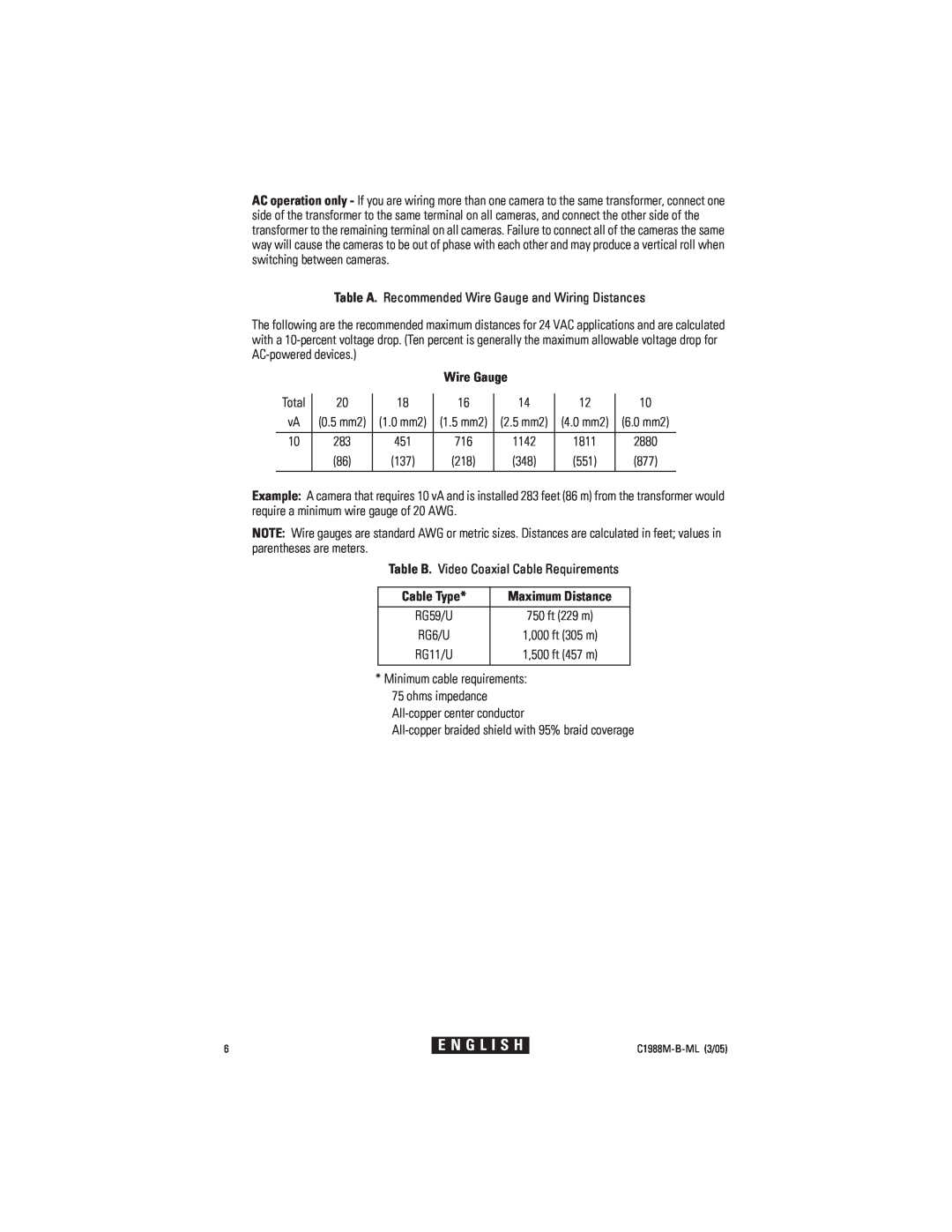AC operation only - If you are wiring more than one camera to the same transformer, connect one side of the transformer to the same terminal on all cameras, and connect the other side of the transformer to the remaining terminal on all cameras. Failure to connect all of the cameras the same way will cause the cameras to be out of phase with each other and may produce a vertical roll when switching between cameras.
Table A. Recommended Wire Gauge and Wiring Distances
The following are the recommended maximum distances for 24 VAC applications and are calculated with a
|
|
|
| Wire Gauge |
|
|
|
| ||
Total |
| 18 |
| 16 |
| 14 |
| 12 |
| 10 |
20 |
|
|
|
| ||||||
vA | (0.5 mm2) | (1.0 mm2) |
| (1.5 mm2) |
| (2.5 mm2) |
| (4.0 mm2) |
| (6.0 mm2) |
|
|
|
|
|
|
|
|
|
|
|
10 | 283 | 451 |
| 716 |
| 1142 |
| 1811 |
| 2880 |
| (86) | (137) |
| (218) |
| (348) |
| (551) |
| (877) |
|
|
|
|
|
|
|
|
|
|
|
Example: A camera that requires 10 vA and is installed 283 feet (86 m) from the transformer would require a minimum wire gauge of 20 AWG.
NOTE: Wire gauges are standard AWG or metric sizes. Distances are calculated in feet; values in parentheses are meters.
Table B. Video Coaxial Cable Requirements
Cable Type* | Maximum Distance |
|
|
RG59/U | 750 ft (229 m) |
RG6/U | 1,000 ft (305 m) |
RG11/U | 1,500 ft (457 m) |
|
|
*Minimum cable requirements: 75 ohms impedance
6
E N G L I S H
